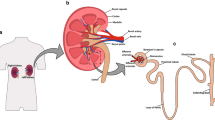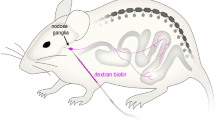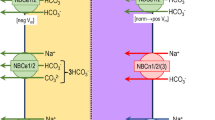Abstract
To characterize human urothelial cell lines’ cannabinoid receptor expression and evaluate their possible use for studying signalling interactions with purinergic and muscarinic receptor activation. PCR was used to detect cannabinoid (CB), muscarinic and purinergic receptor transcripts in HCV29 and UROtsa cells, whilst immunofluorescence evaluated protein expression and localization of cannabinoid receptors. The effect of CB1 agonist (ACEA) on carbachol- and ATP-induced changes in intracellular calcium ([Ca2+]i) levels was measured using fluorimetry. The ability of ACEA to reduce intracellular cAMP was investigated in HCV29 cells. CB1 and GPR55 receptor transcripts were detected in HCV29 and UROtsa cells, respectively. Immunofluorescence showed positive staining for CB1 in the HCV29 cells. Both cell lines expressed transcript levels for muscarinic receptors, but carbachol did not raise [Ca2+]i levels indicating a lack or low expression of Gq-coupled muscarinic receptors. Transcripts for purinergic receptors were detected; ATP significantly increased [Ca2+]i in HCV29 and UROtsa cells by 395 ± 61 and 705 ± 100 nM (mean ± SEM, n = 6), respectively. ACEA did not alter ATP-induced [Ca2+]i or cAMP levels in HCV29 cells. Whilst HCV29 cells expressed CB1 and UROtsa cells expressed GPR55 receptors, these were not functionally coupled to the existing purinergic-driven increase in Ca2+ as such they do not represent a good model to study signalling interactions.





Similar content being viewed by others
References
Apodaca G, Balestreire E, Birder LA (2007) The uroepithelial-associated sensory web. Kidney Int 72:1057–1064
Ashour F, Atterbury-Thomas M, Deuchars J, Evans RJ (2006) An evaluation of antibody detection of the P2X1 receptor subunit in the CNS of wild type and P2X1-knockout mice. Neurosci Lett 397:120–125
Bakali E, Elliott RA, Taylor AH, Willets J, Konje JC, Tincello DG (2013) Distribution and function of the endocannabinoid system in the rat and human bladder. Int Urogynecol J Pelvic Floor Dysfunct 24:855–886
Bidaut-Russell M, Devane WA, Howlett AC (1990) Cannabinoid receptors and modulation of cyclic AMP accumulation in the rat brain. J Neurochem 55:21–26
Birder L, Andersson KE (2013) Urothelial signaling. Physiol Rev 93:653–680
Birder LA, Apodaca G, De Groat WC, Kanai AJ (1998) Adrenergic- and capsaicin-evoked nitric oxide release from urothelium and afferent nerves in urinary bladder. Am J Physiol Ren Physiol 275:F226–F229
Brighton PJ, McDonald J, Taylor AH, Challiss RA, Lambert DG, Konje JC et al (2009) Characterization of anandamide-stimulated cannabinoid receptor signaling in human ULTR myometrial smooth muscle cells. Mol Endocrinol 23:1415–1427
Calandra B, Portier M, Kernéis A, Delpech M, Carillon C, Le Fur G et al (1999) Dual intracellular signaling pathways mediated by the human cannabinoid CB1 receptor. Eur J Pharmacol 374:445–455
den Boon FS, Chameau P, Schaafsma-Zhao Q, van Aken W, Bari M, Oddi S et al (2012) Excitability of prefrontal cortical pyramidal neurons is modulated by activation of intracellular type-2 cannabinoid receptors. Proc Natl Acad Sci U S A 109:3534–3539
Freeman RM, Adekanmi O, Waterfield MR, Waterfield AE, Wright D, Zajicek J (2006) The effect of cannabis on urge incontinence in patients with multiple sclerosis: a multicentre, randomised placebo-controlled trial (CAMS-LUTS). Int Urogynecol J Pelvic Floor Dysfunct 17:636–641
Gebeh AK, Willets JM, Bari M, Hirst RA, Marczylo TH, Taylor AH et al (2013) Elevated anandamide and related N-acylethanolamine levels occur in the peripheral blood of women with ectopic pregnancy and are mirrored by changes in peripheral fatty acid amide hydrolase activity. J Clin Endocrinol Metab 98:1226–1234
Georgopoulos NT, Kirkwood LA, Varley CL, MacLaine NJ, Aziz N, Southgate J (2011) Immortalisation of normal human urothelial cells compromises differentiation capacity. Eur Urol 60:141–149
Gratzke C, Streng T, Park A, Christ G, Stief CG, Hedlund P et al (2009) Distribution and function of cannabinoid receptors 1 and 2 in the rat, monkey and human bladder. J Urol 181:1939–1948
Gratzke C, Streng T, Stief CG, Downs TR, Alroy I, Rosenbaum JS et al (2010) Effects of cannabinor, a novel selective cannabinoid 2 receptor agonist, on bladder function in normal rats. Eur Urol 57:1093–1100
Grynkiewicz G, Poenie M, Tsien RY (1985) A new generation of Ca2+ indicators with greatly improved fluorescence properties. J Biol Chem 260:3440–3450
Hanna-Mitchell AT, Beckel JM, Barbadora S, Kanai AJ, de Groat WC, Birder LA (2007) Non-neuronal acetylcholine and urinary bladder urothelium. Life Sci 80:2298–2302
Hawthorn MH, Chapple CR, Cock M, Chess-Williams R (2000) Urothelium-derived inhibitory factor(s) influences on detrusor muscle contractility in vitro. Br J Pharmacol 129:416–419
Hayn MH, Ballesteros I, de Miguel F, Coyle CH, Tyagi S, Yoshimura N et al (2008) Functional and immunohistochemical characterization of CB1 and CB2 receptors in rat bladder. Urology 72:1174–1178
Howlett AC (2005) Cannabinoid receptor signaling. Cannabinoids :53–79
Howlett AC, Qualy JM, Khachatrian LL (1986) Involvement of Gi in the inhibition of adenylate cyclase by cannabimimetic drugs. Mol Pharmacol 29:307–313
Karasu T, Marczylo TH, Marczylo EL, Taylor AH, Oloto E, Konje JC (2013) The effect of mifepristone (RU486) on the endocannabinoid system in human plasma and first trimester trophoblast of women undergoing termination of pregnancy. J Clin Endocrinol Metab. doi:10.1210/jc.2013-2922
Kullmann FA, Artim D, Beckel J, Barrick S, de Groat WC, Birder LA (2008) Heterogeneity of muscarinic receptor-mediated Ca2+ responses in cultured urothelial cells from rat. Am J Physiol Ren Physiol 294:F971–F981
Kumar V, Chapple CR, Rosario D, Tophill PR, Chess-Williams R (2010) In vitro release of adenosine triphosphate from the urothelium of human bladders with detrusor overactivity, both neurogenic and idiopathic. Eur Urol 57:1087–1092
Lambert DG, Nahorski SR (1990) Pertussis toxin inhibits alpha 2-adrenoceptor-mediated inhibition of adenylate cyclase without affecting muscarinic regulation of [Ca2+]i or inositol phosphate generation in SH-SY5Y human neuroblastoma cells. Biochem Pharmacol 40:2291–2295
Lazzeri M, Vannucchi MG, Zardo C, Spinelli M, Beneforti P, Turini D et al (2004) Immunohistochemical evidence of vanilloid receptor 1 in normal human urinary bladder. Eur Urol 46:792–798
Martin RS, Luong LA, Welsh NJ, Eglen RM, Martin GR, MacLennan SJ (2000) Effects of cannabinoid receptor agonists on neuronally-evoked contractions of urinary bladder tissues isolated from rat, mouse, pig, dog, monkey and human. Br J Pharmacol 129:1707–1715
Michel MC, Wieland T, Tsujimoto G (2009) How reliable are G-protein-coupled receptor antibodies? Naunyn Schmiedeberg’s Arch Pharmacol 379:385–388
Mukerji G, Yiangou Y, Agarwal SK, Anand P (2010) Increased cannabinoid receptor 1-immunoreactive nerve fibers in overactive and painful bladder disorders and their correlation with symptoms. Urology 75:1514.e15–1514.e20
Nong L, Newton C, Friedman H, Klein TW (2001) CB1 and CB2 receptor mRNA expression in human peripheral blood mononuclear cells (PBMC) from various donor types. Adv Exp Med Biol 493:229–233
Ochodnický P, Humphreys S, Eccles R, Poljakovic M, Wiklund P, Michel MC (2012) Expression profiling of G-protein-coupled receptors in human urothelium and related cell lines. BJU Int 110:E293–E300
Ochodnický P, Michel MB, Butter JJ, Seth J, Panicker JN, Michel MC (2013) Bradykinin modulates spontaneous nerve growth factor production and stretch-induced ATP release in human urothelium. Pharmacol Res Off J Ital Pharmacol Soc 70:147–154
Petzoldt JL, Leigh IM, Duffy PG, Sexton C, Masters JR (1995) Immortalisation of human urothelial cells. Urol Res 23:377–380
Pradidarcheep W, Labruyère WT, Dabhoiwala NF, Lamers WH (2008) Lack of specificity of commercially available antisera: better specifications needed. J Histochem Cytochem Off J Histochem Soc 56:1099–1111
Pradidarcheep W, Stallen J, Labruyère WT, Dabhoiwala NF, Michel MC, Lamers WH (2009) Lack of specificity of commercially available antisera against muscarinergic and adrenergic receptors. Naunyn Schmiedeberg’s Arch Pharmacol 379:397–402
Rossi MR, Masters JR, Park S, Todd JH, Garrett SH, Sens MA et al (2001) The immortalized UROtsa cell line as a potential cell culture model of human urothelium. Environ Health Perspect 109:801–808
Simpson AWM (2013) Fluorescent measurement of [Ca2+]c: basic practical considerations. In: Methods in molecular biology, 3rd edn. Human Press Inc., New York, pp 3–36
Sun Y, Keay S, De Deyne PG, Chai TC (2001) Augmented stretch activated adenosine triphosphate release from bladder uroepithelial cells in patients with interstitial cystitis. J Urol 166:1951–1956
Tully BT, Li M, Sun Y, Berkowitz J, Chai TC (2009) Defects in muscarinic receptor cell signaling in bladder urothelial cancer cell lines. Urology 74:467–473
Tyagi S, Tyagi P, Van-le S, Yoshimura N, Chancellor MB, de Miguel F (2006) Qualitative and quantitative expression profile of muscarinic receptors in human urothelium and detrusor. J Urol 176:1673–1678
Tyagi V, Philips BJ, Su R, Smaldone MC, Erickson VL, Chancellor MB et al (2009) Differential expression of functional cannabinoid receptors in human bladder detrusor and urothelium. J Urol 181:1932–1938
Williams JP, Thompson JP, McDonald J, Barnes TA, Cote T, Rowbotham DJ et al (2007) Human peripheral blood mononuclear cells express nociceptin/orphanin FQ, but not mu, delta, or kappa opioid receptors. Anesth Analg 105:998–1005
Yu W, Hill WG (2013) Lack of specificity shown by P2Y6 receptor antibodies. Naunyn Schmiedeberg’s Arch Pharmacol 386:885–891
Acknowledgments
This study was funded by Wellbeing of Women Training Fellowship awarded to Dr. Bakali.
Author information
Authors and Affiliations
Corresponding author
Rights and permissions
About this article
Cite this article
Bakali, E., Elliott, R.A., Taylor, A.H. et al. Human urothelial cell lines as potential models for studying cannabinoid and excitatory receptor interactions in the urinary bladder. Naunyn-Schmiedeberg's Arch Pharmacol 387, 581–589 (2014). https://doi.org/10.1007/s00210-014-0973-5
Received:
Accepted:
Published:
Issue Date:
DOI: https://doi.org/10.1007/s00210-014-0973-5




